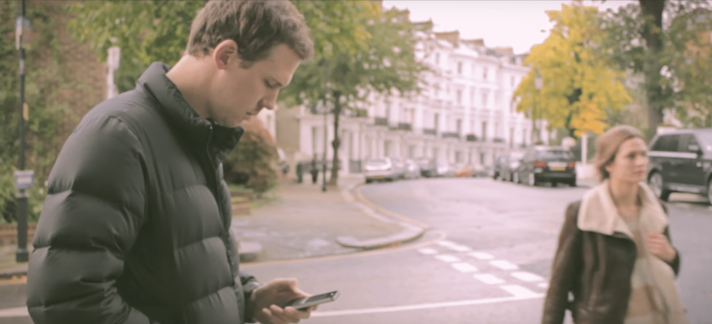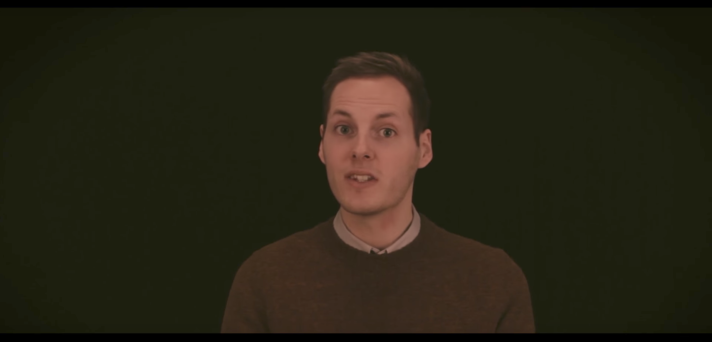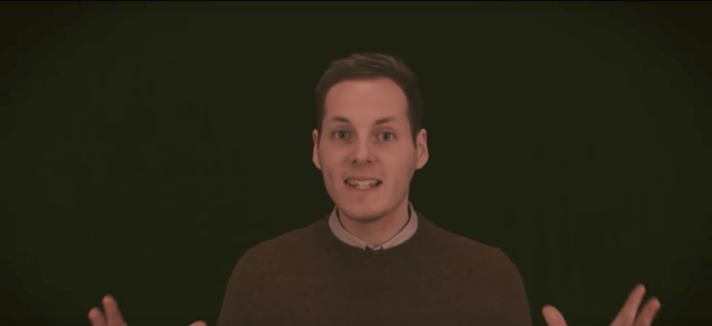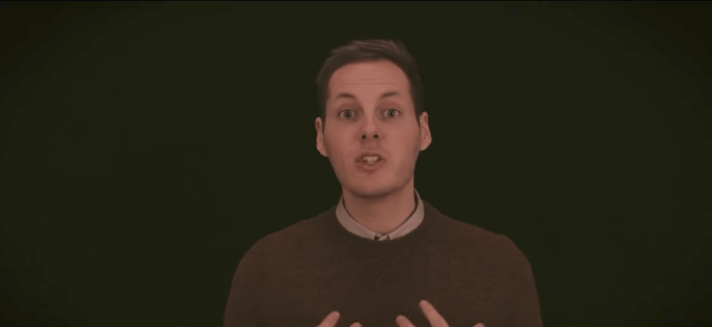Society is going through changes every day and new are laws being established and new tools being created to modify how we do personal tasks. One specific example of a major societal change are technological devices steady rising in popularity and constantly being modified throughout the years. Sure, laptops, cellphones, and tablets have their perks; they are a convenient way to communicate, check social media platforms, watch videos online, and write or save important documents. However, many fail to notice how we have become so psychologically dependent on technology. Even if we are aware of how much technology enslaves us as people, we still have difficulty letting go of our technology.
There are several forms of multimodal media that try to make their audience realize that we need to take a break from technology. The video below is a brilliant example of a successful multimodal media that perfectly illustrates the author’s intention to make their audience aware of our enslavement to technology. The video below is entitled, “Look Up” was created by Gary Turk in 2014, who creates many spoken word short films sharing different perspectives on different issues encountered in everyday life. This video utilizes several elements of rhetorical canons, modes of rhetoric, and rhetoric appeals as they consider their digital audience.
The video opens up with Turk saying how popular he is on social media, but still feels lonely. He ties this point into the idea that we are subjected to technology and rather than socialize and enjoy time with people, we prefer to sit alone behind a computer screen and use that as a way of communicating with others. Turk also includes examples, from love stories to personal ideas, to emphasize his point and inflict emotion in the audience.

 The examples and design choices made by Turk help convey the overall message that he wants viewers try to find a balance between technological and social interaction. However, there are cases where a certain audience tends to use technology more than others. Natascha Notten (2009) and colleagues elaborate more on this concept by defining the term digital divide. They reference David J Gunkel’s article “Second thoughts: toward a critique of the digital divide” and define digital divide as, “unequal access to digital applications-most notably the Internet-resulting from differing economic, cognitive, and socio-cultural resources” (p. 551). The author further expands on digital divide varying on how often an individual uses their given technology.
The examples and design choices made by Turk help convey the overall message that he wants viewers try to find a balance between technological and social interaction. However, there are cases where a certain audience tends to use technology more than others. Natascha Notten (2009) and colleagues elaborate more on this concept by defining the term digital divide. They reference David J Gunkel’s article “Second thoughts: toward a critique of the digital divide” and define digital divide as, “unequal access to digital applications-most notably the Internet-resulting from differing economic, cognitive, and socio-cultural resources” (p. 551). The author further expands on digital divide varying on how often an individual uses their given technology.
Notten (2009) and colleagues also give the example, “better-educated adolescents and adults not only use the Internet more frequently but also use it more often for informational and less often for entertainment purposes than less well-educated adolescents and adults” (p. 552). Other factors can influence how often an individual uses technology, such gender, family status, and social status. It is important for any author to consider all of these factors in their audience to help an idea of a multimodal project connect more to different perspectives from the audience.
The author creates a successful video communicating how society has become dependent on technology and includes several persuasive techniques of the aural mode. Arola, Sheppard, and Ball define aural mode in Writer/Designer as the mode that focusses on sound in rhetorical writing; some examples include music, tone of voice in spoken language, volume of sound, and emphasis and accent (p. 8). The way Turk delivers his argument is calming yet direct, which allows viewer to feel like they are having a personal conversation with him. The fact that he uses language that is very descriptive and follows a rhyme scheme helps with the coherence of the video because it allows viewers to understand the narrations of the events taking place in the film and the fact that the words rhyme can help the author’s message be retained more within a younger generation.
 An example of the aural mode can be seen when Turk quotes in the video from 1:06-1:17, “We edit and exaggerate, we crave adulation, we pretend we don’t notice the social isolation. We put our words into order, until our lives are glistening. We don’t even know if anyone is listening” (Turk 2014). When he makes this statement the reader can feel emotion because Turk’s voice is made louder so viewers can hear his perspective and the fact that he has solemn music playing in the background adds to the dynamics of the video. The music choice helps the reader to feel emotion and realize that the point being conveyed is serious.
An example of the aural mode can be seen when Turk quotes in the video from 1:06-1:17, “We edit and exaggerate, we crave adulation, we pretend we don’t notice the social isolation. We put our words into order, until our lives are glistening. We don’t even know if anyone is listening” (Turk 2014). When he makes this statement the reader can feel emotion because Turk’s voice is made louder so viewers can hear his perspective and the fact that he has solemn music playing in the background adds to the dynamics of the video. The music choice helps the reader to feel emotion and realize that the point being conveyed is serious.
While the aural mode helps tremendously with conveying arguments now, there was a time when aural texts were not as well-recognized by teachers as writing was. Cynthia L. Selfe (2009) quotes in her article that “aural texts were not generally recognized as appropriately intellectual vehicles for composing meaning in composition classrooms. Only writing held that sinecure, and the goal of composition teachers’ assignments continued to be excellence in reading and writing” (p. 632). The video above disproves that idea because placing sound with writing can help a writer immensely when stating their argument because the sound of an author’s voice or music in the background can help convey how an author feels about the issue they are discussing.
The video also expresses rhetorical canons to help add emphasis to its persuasiveness; two specific rhetorical canons used in this video are the style and delivery rhetorical canons. William M. Purcell describes style in the Encyclopedia of Digital Rhetoric as, “the arrangement and depiction of words in a discourse” (p. 698). The three levels of style, grand, plain, and middle, can help a writer balance their word choice so their argument will inflict emotion in an audience and inspire them to take action. In this multimodal artifact, style can display examples of repetition, structure, and rhythm in the video to support the author’s perspective. Style can be seen when the author follows a rhythm when stating his claims and he follows a structured layout of key points that he wants to emphasize on the impact technology has on humans.


Delivery analyzes how voice, gestures, expressions, or presentation play a role in digital rhetoric. Two examples of this can be seen at 1:06 and 4:19 in the video, where the author can be seen using his hands to exaggerate emotion and point to himself and say how he too has fallen victim to the power of technology. Turk also amplifies his voice in the video to make himself sound direct to viewers when conveying a point, while speaking in a calm, but direct, accent to help the reader feel as though they are having a personal conversation with him. The fact that Turk uses both voice and gestures go hand in hand at conveying his message to readers and help readers to look and listen to his argument.
When reviewing this artifact, there are ways in which logos (logical appeal), ethos (credibility of the author/information), and pathos (emotional appeal) are presented in the artifact to add to its credibility. In this multimodal artifact, logos is not presented as strong as ethos or pathos because the author mostly focusses on providing personal reasoning on how technology impacts society and does not really include statistics or definitions. Ethos is really evident in this video because Turk is talking to his audience and having a personal conversation, while also explaining his views on how humans are being enslaved by technology. This allows viewers to see him as credible because he shows how familiar he is with the topic, while also making viewers feel equal through the establishment of personal connection. Finally, Turk establishes pathos by sharing personal observations with the audience and uses eloquent word choice to persuade the audience to take action and minimize their use in technology. An example of pathos can be seen in Turk’s final comment in the video, “look up from your phone, shut down that display, stop watching this video, live life the real way” (Turk 2014). He uses rhythm and word choice to make a personal remark to the audience and motivate them to get off technology and live life.
 This multimodal artifact embodies several rhetorical characteristics to express an idea to readers and make them feel moved. The video acknowledges all perspectives of the audience and embodies several characteristics of rhetorical modes and canons to help illustrate the author’s main point. This artifact exemplifies the idea on how a writer can establish a personal connection with the audience to help convey their point while also using emotional appeals to establish a connection with the audience and inspire them to make a change. This can help readers understand how a visual representation of an author’s perspective can help an audience connect with the author and how it can help an author illustrate their point by establishing a personal and emotional connection with their audience.
This multimodal artifact embodies several rhetorical characteristics to express an idea to readers and make them feel moved. The video acknowledges all perspectives of the audience and embodies several characteristics of rhetorical modes and canons to help illustrate the author’s main point. This artifact exemplifies the idea on how a writer can establish a personal connection with the audience to help convey their point while also using emotional appeals to establish a connection with the audience and inspire them to make a change. This can help readers understand how a visual representation of an author’s perspective can help an audience connect with the author and how it can help an author illustrate their point by establishing a personal and emotional connection with their audience.
Works Cited
Arola, K. L., Sheppard, J., & Ball, C. E. (2014). Writer/Designer: A Guide To Making Multimodal Projects. Boston: Bedford/St. Martins.
Purcell, W. M. (2010). Encyclopedia of Rhetoric and Composition: Communication from Ancient Times to the Information Age. In T. Enos (Ed.) New York: Routledge. Retrieved September 11th, 2017.
Notten, N., Peter, J., Kraaykamp, G., & Valkenburg, P. (2009). Research Note: Digital Divide across Borders-A Cross-National Study of Adolescents’ Use of Digital Technologies. European Sociological Review, 25(5), 551-560. Retrieved from http://www.jstor.org/stable/27745235
Selfe, C. L. (2009). “The Movement of Air, the Breath of Meaning: Aurality and Multimodal Composing.” College Composing and Communication. 616-663.
Turk, G. (2014, April 25th). Look Up | Gary Turk – Official Video. Video retrieved from https://www.youtube.com/watch?v=Z7dLU6fk9QY
Fair Use Statement
This article is for educational purposes ONLY. It is intended for rhetorical criticism, teaching, and research in regard to Section 107: Limitations on exclusive rights: Fair use, U.S. Copyright Code. I do not claim these works as my own and outside sources are only meant for academic purpose and to enhance my own individual analysis.